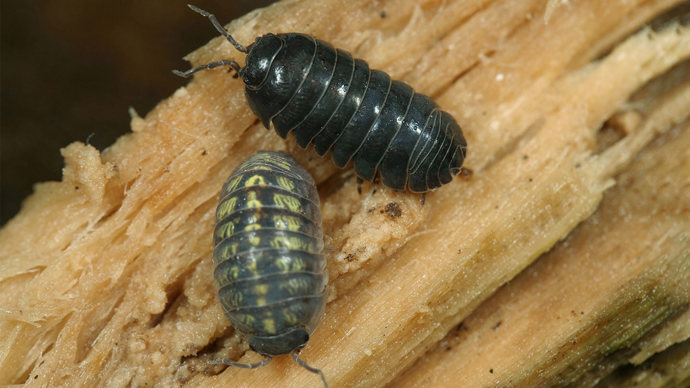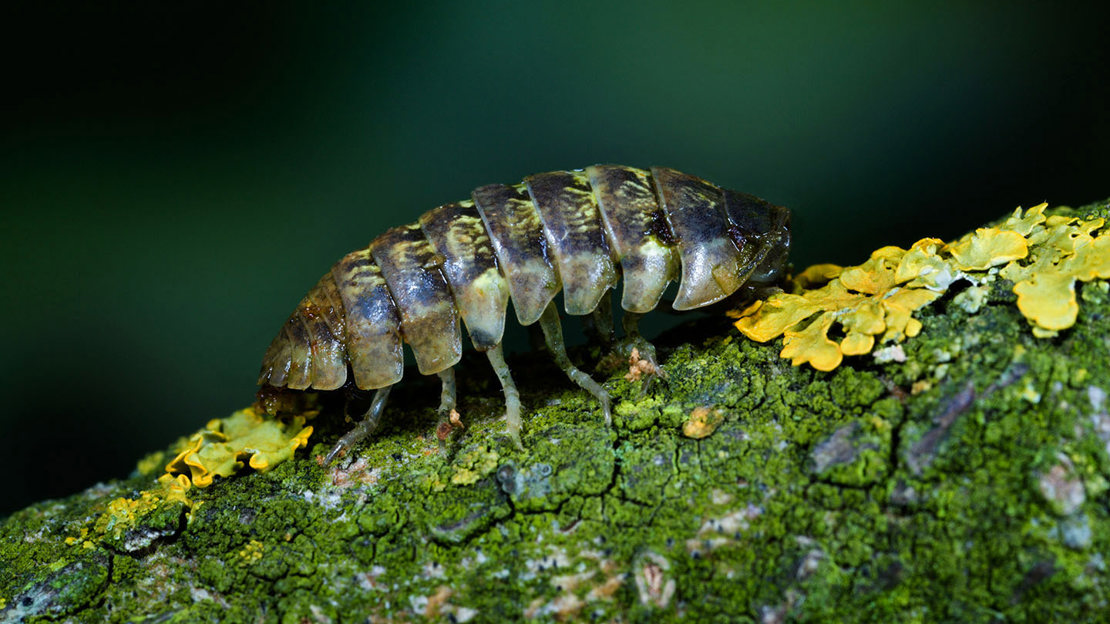Common name(s): pill woodlouse, roly poly
Scientific name: Armadillidium vulgare
Family: Armadillidiidae
Habitat: woodland, grassland, urban areas
Predators: birds and small mammals
Origin: native
Easily found and easily startled, the pill woodlouse is named after its habit of rolling tight into a ball when disturbed. They’re a common sight in woodland, parks and gardens alike.
Common name(s): pill woodlouse, roly poly
Scientific name: Armadillidium vulgare
Family: Armadillidiidae
Habitat: woodland, grassland, urban areas
Predators: birds and small mammals
Origin: native
Adults: can grow up to 18mm long and are usually slate grey. Their exoskeletons have several segments, or plates. The pill woodlouse is more rounded than the common woodlouse.
Young: look like a smaller, white versions of adults and are carried in a pouch under the mother’s abdomen.
Pill woodlice feed on dead plant matter, as well as lichen and algae. They find food using their senses of taste and smell.

Credit: Custom Life Science Images / Alamy Stock Photo
Females develop a brood pouch during the breeding season. When fertilised, the eggs pass into it and hatch, developing in the pouch until the young are ready to emerge.
The pill woodlouse is common and widespread throughout the UK, but is more frequent in the south and east.

You can spot pill woodlice throughout the year, though they may be less active in cold weather. Look for them on the soggy ground under stumps of wood or plant pots.
In the US, children sometimes keep pill woodlice, or pill bugs as they are known there, as pets.
This species is common and not believed to be under threat.